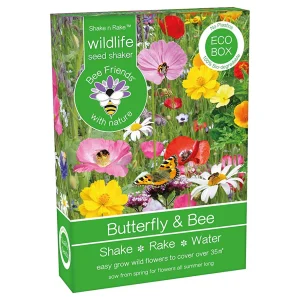Flowers for Bees
Best Flowers for Bees
Flowers for bees in your garden
Some great flowers to attract bees to your garden include:
1. Lavender
Lavendar is a popular plant for bees due to its abundant nectar and pollen production. Bees are attracted to the fragrant purple flowers of lavender and will often visit the plants to forage for food. Planting lavender in your garden can help support local bee populations and contribute to pollination in your area. Bees play a crucial role in our ecosystem, so providing them with a source of food like lavender can help ensure their health and survival. Just be sure to plant a variety of flowers to provide bees with a diverse and nutritious diet.
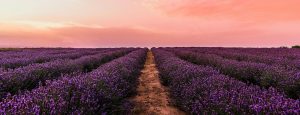
2. Sunflowers
Sunflowers are excellent choice as flowers for bees in your garden. Bees are attracted to sunflowers because of their brightly colored petals and high nectar content. Planting different varieties of sunflowers throughout your garden can help attract a diverse range of bee species.
To attract bees to your sunflowers, make sure to plant them in a sunny location with well-drained soil. You can also plant companion plants such as lavender, marigolds, and cosmos to attract even more bees to your garden.
Bees are essential pollinators for many plants, including sunflowers, so by planting sunflowers in your garden, you are not only providing a food source for bees but also helping to support the overall health of your garden ecosystem. Be sure to avoid using pesticides in your garden, as they can be harmful to bees and other beneficial insects.
Bee balm, also known as Monarda, is a type of flowering plant that is popular among gardeners for its vibrant blooms and fragrant leaves. It is commonly found in North America and is often used in ornamental gardens and landscapes.
Bee balm is one of the favourite flowers for bees because of its sweet nectar and bright colors. Bees are attracted to plants with bright, colorful blooms as they associate these flowers with a good source of food. The nectar produced by bee balm is high in sugars, making it an attractive food source for bees.
In addition to attracting bees, bee balm also attracts other pollinators such as butterflies and hummingbirds. This makes bee balm a great plant to include in a garden to help support pollinator populations and encourage biodiversity.
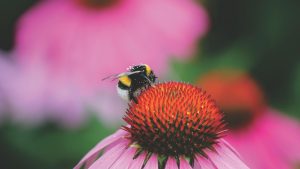 4. Coneflowers
4. Coneflowers
Coneflowers, also known as Echinacea, are a type of flowering plant native to North America. They are known for their showy, daisy-like flowers with prominent conical centers. Coneflowers are popular garden plants due to their vibrant, long-lasting blooms and low maintenance requirements.
Coneflowers are highly attractive flowers for bees and other pollinators. The nectar and pollen of the flowers provide an important food source for bees, helping to support their populations and overall health. Planting coneflowers in your garden can help attract and support pollinators, making them a valuable addition to any bee-friendly garden.
5. Salvias
Salvias are a group of plants belonging to the genus Salvia, which includes a wide variety of species commonly known as sage. These plants are known for their attractive flowers, which are often shades of purple, blue, pink, or white.
Salvias are well-loved by bees and other pollinators due to their nectar-rich flowers. Bees are particularly attracted to salvias because of their bright colors and abundant nectar, making them an important source of food for these beneficial insects. Planting salvias in your garden can help attract bees and other pollinators, which can in turn help improve the health of your garden by promoting pollination and increasing fruit and vegetable yields.
6. Liatris
Liatris, also known as blazing star or gayfeather, is a genus of flowering plants that belong to the 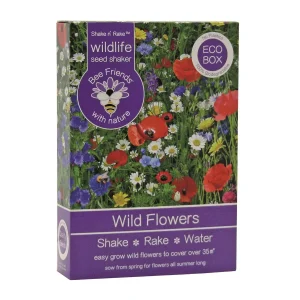 Asteraceae family. They are native to North America and are known for their tall spikes of purple or white flowers. Liatris are popular with bees and other pollinators, as they produce nectar and pollen that attract these insects. Therefore, planting liatris in your garden can help attract bees and other beneficial insects.
Asteraceae family. They are native to North America and are known for their tall spikes of purple or white flowers. Liatris are popular with bees and other pollinators, as they produce nectar and pollen that attract these insects. Therefore, planting liatris in your garden can help attract bees and other beneficial insects.
7. Cosmos
Cosmos flowers are colorful annual plants that are known for their bright, daisy-like flowers that come in shades of pink, white, and purple. They are easy to grow and are a popular choice for gardeners looking to add a pop of color to their gardens.
Cosmos flowers are not only beautiful, but they are also good for bees. These flowers are known to attract pollinators, including bees, butterflies, and hummingbirds, with their nectar-rich blooms. Bees play a crucial role in pollinating flowers and ensuring the health of our ecosystems, so planting cosmos flowers in your garden can help support these important pollinators.
8. Zinnias
Zinnias are a type of flowering plant that belong to the daisy family (Asteraceae). They are known for their vibrant colors and long-lasting blooms, making them a popular choice for gardeners.
Zinnias are excellent plants for attracting bees and other pollinators to the garden. Bees are attracted to the bright colors and sweet nectar of zinnia flowers, and they play a crucial role in pollinating the plants, helping them to produce seeds for future growth.
In conclusion, zinnias are not only beautiful flowers to have in the garden, but they are also beneficial for bees and other pollinators.
9. Butterfly bush
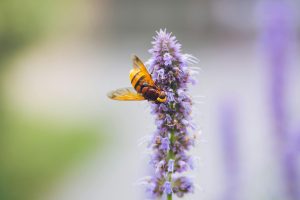 10. Hyssop
10. Hyssop
Hyssop is a herbaceous plant that belongs to the mint family. It is known for its aromatic leaves and purple flowers, and it has been used for culinary, medicinal, and ornamental purposes.
Hyssop is often said to be good for bees, as its flowers attract pollinators such as bees and butterflies. This can help with pollination in the garden and support the health of bee populations. Bees are attracted to hyssop because of its nectar and pollen, which they use as food sources. Overall, planting hyssop in your garden can help support the local bee population and contribute to a healthier ecosystem.
These flowers are not only beautiful but also provide nectar and pollen for bees, making them excellent choices for bee-friendly gardens.
Hyssop is a herbaceous plant that belongs to the mint family. It has been used for centuries for both culinary and medicinal purposes. Some of the benefits of hyssop include:
1. Respiratory health: Hyssop is known for its ability to help alleviate symptoms of respiratory conditions such as coughs, colds, bronchitis, and asthma. It has expectorant properties that help to loosen mucus in the respiratory tract and promote easier breathing.
2. Digestive health: Hyssop has been traditionally used to improve digestion and alleviate gastrointestinal issues such as indigestion, bloating, and gas. It can also help to stimulate appetite and promote overall digestive health.
3. Immune system support: Hyssop is rich in antioxidants and has anti-inflammatory properties, which can help support a healthy immune system and protect against infections and diseases.
4. Antibacterial and antiviral properties: Hyssop has been shown to have antimicrobial properties that can help defend against bacteria and viruses. It may be used topically to help heal wounds and prevent infections.
5. Stress relief: Hyssop is believed to have calming and relaxing properties that can help reduce stress, anxiety, and promote overall mental wellbeing.
6. Skin health: Hyssop can be used topically to help treat various skin conditions such as eczema, dermatitis, and psoriasis. Its anti-inflammatory and antioxidant properties can help soothe and heal the skin.
It is important to note that while hyssop offers many potential health benefits, it is always best to consult with a healthcare professional before incorporating it into your diet or using it for medicinal purposes.

